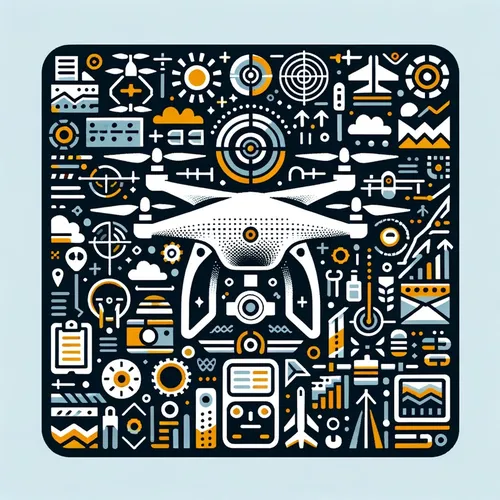Drone Pilots Soar High: Juicy Secrets to Dominate the Skies in 2025
- Author
- Quiet. Please
- Published
- Mon 04 Aug 2025
- Episode Link
- https://www.spreaker.com/episode/drone-pilots-soar-high-juicy-secrets-to-dominate-the-skies-in-2025--67242910
This is you Professional Drone Pilot: Flight Tips & Industry Updates podcast.
Professional drone pilots are entering a transformative era defined by regulatory updates, technical innovation, and a rapidly expanding market. According to Research and Markets, the North American drone sector is projected to reach nearly 27 billion dollars by 2033, bolstered by rising demand in logistics, construction, and inspection services. For listeners aiming to maintain a competitive edge, keeping pace with advanced flight techniques is crucial. Mastery of autonomous flight paths, precise waypoint programming, and real-time obstacle avoidance can vastly improve both safety and efficiency. Leveraging the latest AI-assisted features found in premier commercial drone platforms allows for more accurate mapping, better image quality, and streamlined operations, which are increasingly vital across agriculture, real estate, and media.
Routine equipment maintenance is non-negotiable for maximizing uptime. Experts recommend implementing a pre- and post-flight checklist that covers battery health, sensor calibration, and firmware updates to minimize unexpected failures and ensure insurance compliance. Speaking of insurance, The Verge reports that changes in liability regulations are prompting more pilots to reevaluate their coverage, with many opting for on-demand, per-mission policies tailored to client profiles or project scope.
Business opportunities abound in 2025, particularly as regulatory frameworks like the FAA’s anticipated expansion of beyond visual line of sight operations promise to unlock routes for long-distance delivery, infrastructure inspection, and environmental surveying. The United States Postal Service and major delivery companies continue piloting drone-based solutions, reinforcing predictions from Markets and Markets that logistics is set to be the fastest-growing drone sector. For aerial photographers and inspection specialists, this climate offers new revenue streams in orthomosaic mapping, thermal imaging, and industrial site monitoring.
Certification and compliance remain foundational. The FAA now requires all remote pilots to complete recurrent online training every two years. Pilots must maintain easy accessibility to their certification during flights and stay updated on evolving rules about airspace, night operations, and remote identification standards. For listeners in Canada and other jurisdictions, requirements and test procedures may differ, so consult your local aviation authority for specific certification guidance.
Client relations and pricing strategies are evolving as the market matures. Transparency, clear contracts, and demonstrating regulatory compliance instill confidence, while offering tiered pricing for advanced deliverables like 3D modeling or data analytics services can boost profitability. Weather remains a persistent concern; incorporating real-time meteorological data into flight planning is now standard practice, as is using redundant navigation systems to mitigate unplanned hazards like sudden wind shifts.
Looking forward, innovations such as passenger drones, AI-driven inspection services, and lighter, longer-range batteries are poised to redefine what’s possible for commercial pilots. The sector’s rapid growth, regulatory support, and cross-industry demand suggest that those who invest in advanced skills, compliance, and service diversification will continue to thrive. Thank you for tuning in, and be sure to come back next week for more. This has been a Quiet Please production. For more from me, check out Quiet Please Dot A I.
For more http://www.quietplease.ai
Get the best deals https://amzn.to/3ODvOta
